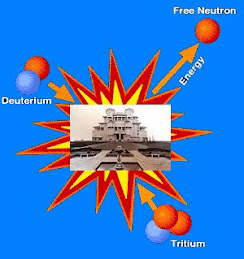Nama Dosen :
1. Dra. Wiendartun, M.Si
2. Dra. Heni, M.Si.
3. Drs. Yuyu R. Tayubi, M.Si.
Crystal structure and properties
Many properties of materials are affected by their crystal structure. This structure can be investigated using a range of crystallographic techniques, including X-ray crystallography, neutron diffraction and electron diffraction.
The sizes of the individual crystals in a crystalline solid material vary depending on the material involved and the conditions when it was formed. Most crystalline materials encountered in everyday life are polycrystalline, with the individual crystals being microscopic in scale, but macroscopic single crystals can be produced either naturally (e.g. diamonds) or artificially.
Real crystals feature defects or irregularities in the ideal arrangements, and it is these defects that critically determine many of the electrical and mechanical properties of real materials.
The crystal lattice can vibrate. These vibrations are found to be quantised, the quantised vibrational modes being known as phonons. Phonons play a major role in many of the physical properties of solids, such as the transmission of sound. In insulating solids, phonons are also the primary mechanism by which heat conduction takes place. Phonons are also necessary for understanding the lattice heat capacity of a solid, as in the Einstein model and the later Debye model.
Crystallography is the experimental science of the arrangement of atoms in solids. The word "crystallography" derives from the Greek words crystallon = cold drop / frozen drop, with its meaning extending to all solids with some degree of transparency, and grapho = write.
Before the development of X-ray diffraction crystallography (see below), the study of crystals was based on their geometry. This involves measuring the angles of crystal faces relative to theoretical reference axes (crystallographic axes), and establishing the symmetry of the crystal in question. The former is carried out using a goniometer. The position in 3D space of each crystal face is plotted on a stereographic net, e.g. Wulff net or Lambert net. In fact, the pole to each face is plotted on the net. Each point is labelled with its Miller index. The final plot allows the symmetry of the crystal to be established.
Crystallographic methods now depend on the analysis of the diffraction patterns of a sample targeted by a beam of some type. Although X-rays are most commonly used, the beam is not always electromagnetic radiation. For some purposes electrons or neutrons are used. This is facilitated by the wave properties of the particles. Crystallographers often explicitly state the type of illumination used when referring to a method, as with the terms X-ray diffraction, neutron diffraction and electron diffraction.
These three types of radiation interact with the specimen in different ways. X-rays interact with the spatial distribution of the valence electrons, while electrons are charged particles and therefore feel the total charge distribution of both the atomic nuclei and the surrounding electrons. Neutrons are scattered by the atomic nuclei through the strong nuclear forces, but in addition, the magnetic moment of neutrons is non-zero. They are therefore also scattered by magnetic fields. When neutrons are scattered from hydrogen-containing materials, they produce diffraction patterns with high noise levels. However, the material can sometimes be treated to substitute hydrogen for deuterium. Because of these different forms of interaction, the three types of radiation are suitable for different crystallographic studies.
Lihat Juga:Pendahuluan Fisika Zat Padat
Referensi :
1. Ashcroft and Mermin, Solid State Physics, 1976, Saunders College , Philadelphia
2. M.A.Oemar, Fundamental of Solid State Physics, 1977, Addison Wesley, USA.
3. Adrianus J Dekker, Solid State Physics, 1978, Maruzen company LTD, Japan
4. H.M.Rosenberg, The Solid State Physics Third Edition, 1987, Oxford Science Publications, USA.
5. Christman, Introduction to Solid Physics, 1989, John Wiley & Sons, USA.






Tidak ada komentar:
Posting Komentar